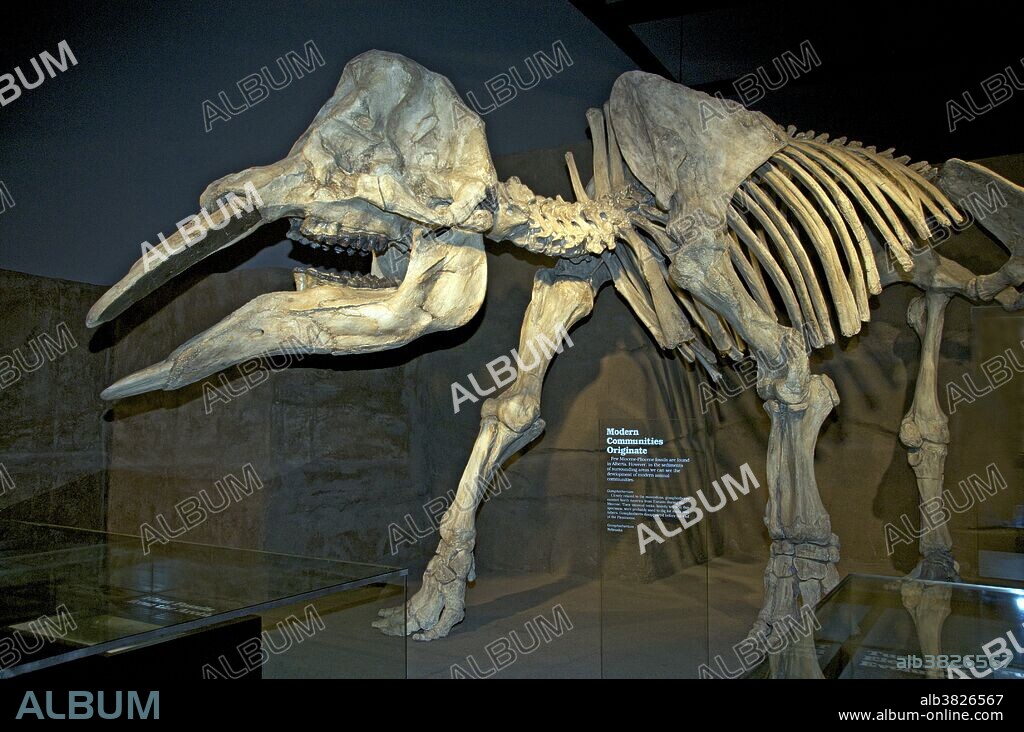alb3826567
GOMPHOTHERIUM

|
Ajouter à une autre Lightbox |
|
Ajouter à une autre Lightbox |



Avez-vous déjà un compte? S'identifier
Vous n'avez pas de compte ? S'inscrire
Acheter cette image

Titre:
GOMPHOTHERIUM
Légende:
Voir la traduction automatique
Gomphotherium, closely related to mastodons, disappeared before the end of the Pleistocene. The 3 m (10 ft) tall creature, also known as Trilophodon or Tetrabelodon, resembled a modern elephant but had four tusks instead of two: two on the upper jaw and two on the elongated lower jaw. The lower ones are parallel and shaped like a shovel and were probably used as such. Unlike modern elephants, the upper tusks were covered by a layer of enamel. These animals probably lived in swamps or near lakes, using their tusks to dig or scrape up aquatic vegetation. This specimen was found in Nebraska. Royal Tyrrell Museum, Alberta, Canada.
Crédit:
Album / Science Source / Stephen J. Krasemann
Autorisations:
Modèle: Non - Propriété: Non
Questions sur les droits?
Questions sur les droits?
Taille de l'image:
4304 x 2852 px | 35.1 MB
Taille d'impression:
36.4 x 24.1 cm | 14.3 x 9.5 in (300 dpi)
Mots clés:
 Pinterest
Pinterest Twitter
Twitter Facebook
Facebook Copier le lien
Copier le lien Email
Email
